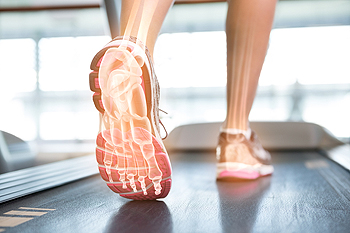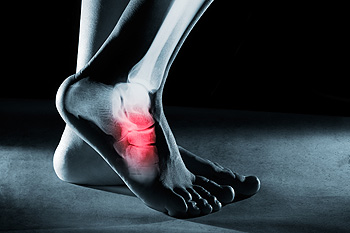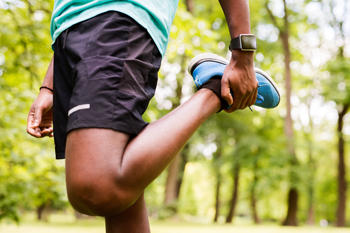Connect With Us
Blog

Preventing and managing running injuries requires a multifaceted approach due to their multifactorial nature. Common risk factors include overtraining, wearing improper footwear, biomechanical imbalances, and inadequate recovery. To mitigate these risks, it is helpful for runners to incorporate a variety of strategies, including proper warm-up and cool-down routines, gradual increases in mileage, strength training, and flexibility exercises. Additionally, ensuring proper footwear selection and addressing any biomechanical issues through gait analysis and orthotic interventions can help prevent injuries. In the event of an injury, treatment may involve rest, compression, elevation, and in some cases, less conservative interventions. If you are a runner and have sustained a running injury, or if you want to make sure you avoid injuries in the future, it is suggested that you schedule an appointment with a podiatrist who can offer expert advice in foot and ankle biomechanics, gait analysis, injury assessment, and customized orthotic interventions.
All runners should take extra precaution when trying to avoid injury. If you have any concerns about your feet, contact one of the podiatrists of Ark La Tex Foot & Ankle Specialists. Our doctors will treat your foot and ankle needs.
How to Prevent Running Injuries
There are a lot of mistakes a runner can make prior to a workout that can induce injury. A lot of athletes tend to overstretch before running, instead of saving those workouts for a post-run routine. Deep lunges and hand-to-toe hamstring pulls should be performed after a workout instead of during a warmup. Another common mistake is jumping into an intense routine before your body is physically prepared for it. You should try to ease your way into long-distance running instead of forcing yourself to rush into it.
More Tips for Preventing Injury
- Incorporate Strength Training into Workouts - This will help improve the body’s overall athleticism
- Improve and Maintain Your Flexibility – Stretching everyday will help improve overall performance
- “Warm Up” Before Running and “Cool Down” Afterward – A warm up of 5-10 minutes helps get rid of lactic acid in the muscles and prevents delayed muscle soreness
- Cross-Training is Crucial
- Wear Proper Running Shoes
- Have a Formal Gait Analysis – Poor biomechanics can easily cause injury
If you have any questions, please feel free to contact our offices located in Shreveport and Bossier City, LA . We offer the newest diagnostic and treatment technologies for all your foot care needs.

Multiple hereditary exostoses, or MHE, is a rare genetic disorder characterized by the development of multiple benign bone tumors, called osteochondromas, on the bones of the skeleton. These growths typically appear during childhood and adolescence and can affect various bones, including those in the feet and ankles. In the feet, MHE may lead to deformities, such as toe angulation, limb length discrepancies, and altered gait patterns. This can result in pain, limited mobility, and cosmetic concerns. If you have the symptoms described here, it is strongly suggested that you schedule an appointment with a podiatrist who can diagnose the problem and provide appropriate treatment. If it is an MHE-related foot and ankle issue, the podiatrist will determine if custom-made orthotic interventions that can provide support and improve foot function will be helpful, or if surgical interventions need to be performed that can correct deformities or remove problematic osteochondromas. If you have been afflicted with this rare foot condition, it is suggested that you are under the care of a podiatrist who can help you manage MHE.
Some foot conditions may require additional professional care. If you have any concerns, contact one of the podiatrists of Ark La Tex Foot & Ankle Specialists. Our doctors can provide the care you need to keep you pain-free and on your feet.
Rare Foot Conditions
The majority of foot conditions are common and can be treated by a podiatrist. Standard diagnostic procedures are generally used to identify specific conditions and treatment can be rendered. A podiatrist also treats rare foot conditions which can be difficult to diagnose and may need extra attention and care.
There are many rare foot conditions that can affect children. Some of these can include:
- Freiberg’s disease
- Kohler’s disease
- Maffucci syndrome
Freiberg’s disease - This can be seen as a deterioration and flattening of a metatarsal bone that exists in the ball of the foot. It typically affects pre-teen and teenage girls, but can affect anyone at any age. Symptoms that can accompany this can be swelling, stiffness, and the patient may limp.
Kohler’s disease - This often targets the bone in the arch of the foot and affects younger boys. It can lead to an interruption of the blood supply which ultimately can lead to bone deterioration. The patient may limp or experience tenderness, swelling, and redness.
Maffucci syndrome - This affects the long bones in a child’s foot leading to the development of abnormal bone lesions. They are benign growths and typically develop in early childhood and the bones may be susceptible to breaking.
A podiatrist can properly diagnose and treat all types of rare foot conditions. If your child is affected by any of these symptoms or conditions, please don’t hesitate to call our office so the correct treatment method can begin.
If you have any questions please feel free to contact our offices located in Shreveport and Bossier City, LA . We offer the newest diagnostic tools and technology to treat your foot and ankle needs.

Incorporating foot stretches into your post-run routine offers a multitude of benefits, helping your feet recover from the demands of running while reducing the risk of future injury. Toe curls, where you curl your toes downward and then upward, help strengthen the muscles in your feet and improve flexibility. Ankle rotations, performed by gently rotating your ankles in clockwise and counterclockwise motions, enhance ankle mobility and reduce stiffness. Additionally, plantar fascia stretches, achieved by gently pulling your toes towards you to stretch the arch of your foot, alleviate tension in the plantar fascia, and help prevent conditions like plantar fasciitis. Calf stretches, targeting the muscles in the lower leg, improve range of motion and prevent tightness during running. Finally, Achilles tendon stretches, where you lean against a wall with one foot back and gently press the heel towards the ground, increase flexibility and reduce strain on the Achilles tendon. By incorporating these stretches into your post-run routine, you can optimize performance, prevent injuries, and promote overall foot health. If you have endured a foot injury from running, it is suggested that you visit a podiatrist who can offer you appropriate treatment options, in addition to suggesting foot stretches that are best for you.
Stretching the feet is a great way to prevent injuries. If you have any concerns with your feet consult with one of the podiatrists from Ark La Tex Foot & Ankle Specialists. Our doctors will assess your condition and provide you with quality foot and ankle treatment.
Stretching the Feet
Stretching the muscles in the foot is an important part in any physical activity. Feet that are tight can lead to less flexibility and make you more prone to injury. One of the most common forms of foot pain, plantar fasciitis, can be stretched out to help ease the pain. Stretching can not only ease pain from plantar fasciitis but also prevent it as well. However, it is important to see a podiatrist first if stretching is right for you. Podiatrists can also recommend other ways to stretch your feet. Once you know whether stretching is right for you, here are some excellent stretches you can do.
- Using a foam roller or any cylindrical object (a water bottle or soda can will do), roll the object under your foot back and forth. You should also exert pressure on the object. Be sure to do this to both feet for a minute. Do this exercise three times each.
- Similar to the previous one, take a ball, such as a tennis ball, and roll it under your foot while seated and exert pressure on it.
- Grab a resistance band or towel and take a seat. If you are using a towel, fold it length wise. Next put either one between the ball of your foot and heel and pull with both hands on each side towards you. Hold this for 15 seconds and then switch feet. Do this three times for each foot.
- Finally hold your big toe while crossing one leg over the other. Pull the toe towards you and hold for 15 seconds. Once again do this three times per foot.
It is best to go easy when first stretching your foot and work your way up. If your foot starts hurting, stop exercising and ice and rest the foot. It is advised to then see a podiatrist for help.
If you have any questions, please feel free to contact our offices located in Shreveport and Bossier City, LA . We offer the newest diagnostic and treatment technologies for all your foot care needs.

